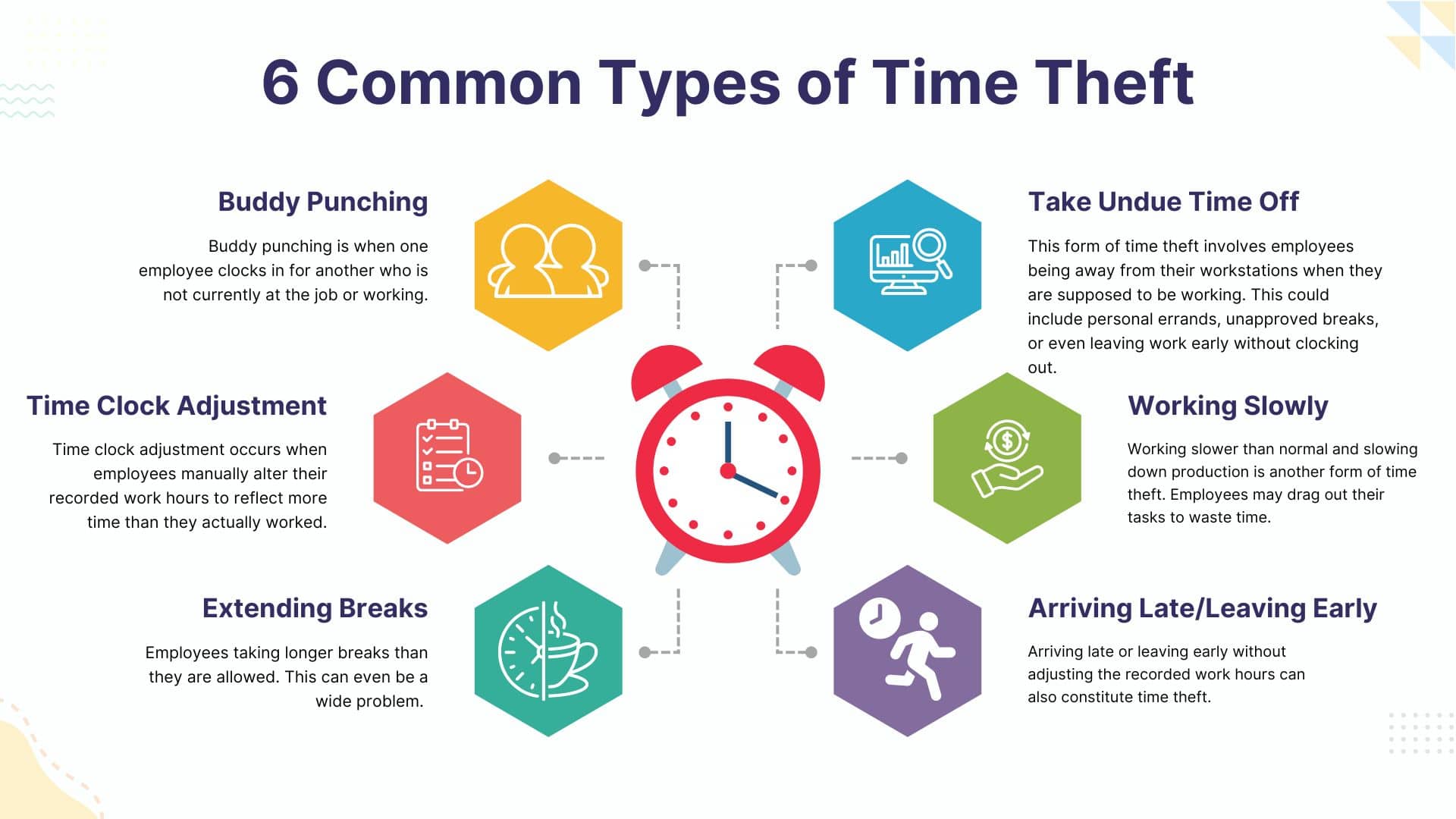Time theft may seem like an innocuous problem, something not worth worrying about. However, that couldn’t be further from the truth. Time theft can cost you several thousands of dollars over the course of the year for just one employee. This problem can also lead to fraudulent behavior and even crimes if it is not combatted. Understanding exactly what time theft is and how to deal with it is key to making sure you aren’t losing money and productivity.
What is Time Theft?
Time theft is essentially when an employee “steals” time away from an employer. This can be done in a multitude of ways that cost money and productivity for the company. Sometimes these “time thefts” are accidental, even somewhat natural for the workplace (talking with a coworker for too long of a time), others are deliberate misuse of time.
Time theft is not a federal crime. Moreover, even if you suspect an employee of time theft, you cannot withhold payment from them over a time theft claim according to Solink. Most employers choose too either:
- Train the employee on avoiding time theft
- Take disciplinary action
- Terminate the employee
There are many different types of time theft that an employee can commit. Depending on your situation, you may need to terminate the employee. Here are some of the most common methods.

How to Prevent Time Theft
Preventing time theft is a bit more complex than simply tracking the time that employees work. Most of the time, you need a multi-pronged approach to tackle time theft. By using some of these tools and tactics you can curb time theft from happening or deal with it when it does happen.
Have a Policy in Place and Enforce It
One of the most basic mistakes that companies make when dealing with time theft is not even acknowledging it with policies. You’ll want to establish clear time policies that employees can follow when clocking in, clocking on, and during work hours. You should showcase what time theft is, the consequences of engaging in such behavior, and the procedures for reporting and investigating for managers. When you create your policy, consider things like:
- Clear and detailed explanations of time theft
- Training on the policy you will need to do ( there are helpful templates for this)
- Having employees sign an agreement saying they understand the new rules and consequences if they are violated
Additionally, you’ll want to make sure you enforce the new policy that you put in place. That means working with team leaders and managers to ensure that everyone is following the rules.
Have an External Party Conduct an Investigation
If time theft has occurred, you’ll need to have a third party to review the facts of the report. This cannot be the person who submitted the report about time theft. It needs to be a neutral third party either within the company or outside of it. It can ensure that the review is impartial and correct.
Use a Different Method of Time Clock
Many companies use a simple punch clock to track when employees come in and out of the office. However, there are more secure methods now for verifying employees and their location even when they are working remotely or on a job site. This includes systems like:
Biometric Systems: This type of clock uses unique identifiers such as fingerprints or facial recognition to ensure that only the actual employee can clock in and out. Employees then have to be in person and at specific times to use the system.
Mobile Apps: GPS-enabled time-tracking apps can verify that employees are clocking in and out at approved locations.
Swipe Cards: These types of systems require that a specific card (think credit card) be swiped that will log in to the employee. Unless another person has their card, they can’t swipe in for their shift if they are not at the job site. You can also set specific restrictions on when people can and can’t clock in.
Institute Rewards for Attendance
Offering rewards for good attendance and timely clock-ins can help curb the effort to want to create time theft in the first place. Try setting up a rewards program for attendance that can be verified. These rewards can range from:
- Gift cards
- Bonuses
- Extra PTO
- And more
Rewards and recognition of on-time individuals can not only be a great way to prevent time theft, but it’s also a great way to recognize all the hard work your team is doing.
Monitoring and Continuous Improvement
When you have implemented these changes, it’s important to never stop improving. As technology changes and our roles change, time theft will also change. It’s important to train your staff on what is appropriate, what is not, and how to best conduct themselves. This is especially true as more and more of the workforce moves to working remotely.
Why Time Theft is Hard to Prove
Proving time theft is challenging due to privacy concerns, difficulty distinguishing intentional from accidental theft, and legal complexities. Understanding time theft forms and how they affect your business and negating them is most likely the best way to protect your business. While some companies have been able to sue and recrew losses from time theft, most companies tend to just move on from the employee.
Looking to Prevent Time Theft?
If you are looking for a new time and attendance system to help protect your business from time, don’t worry, 360Connect has got your back. Just fill out our form and we’ll contact you to verify your information and needs. From there, you’ll receive up to 5 quotes from suppliers on a high-quality system. This process is free and simple to use.

